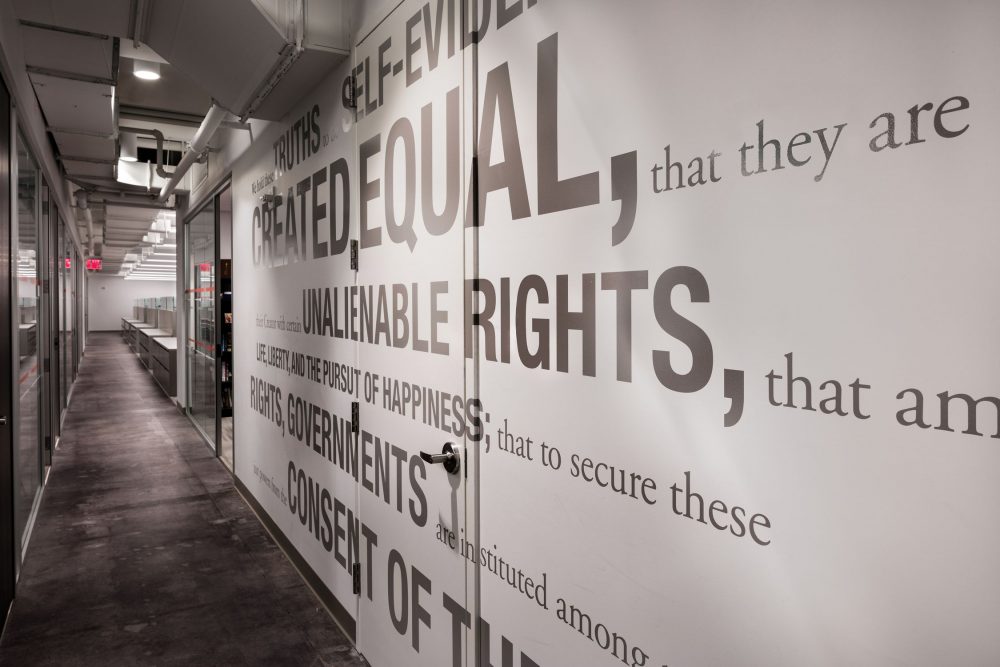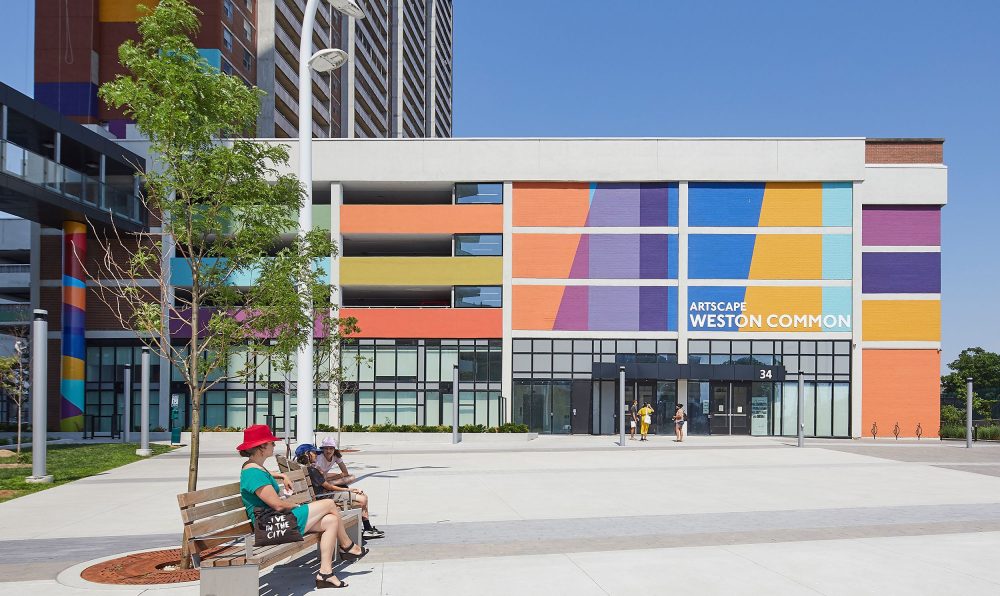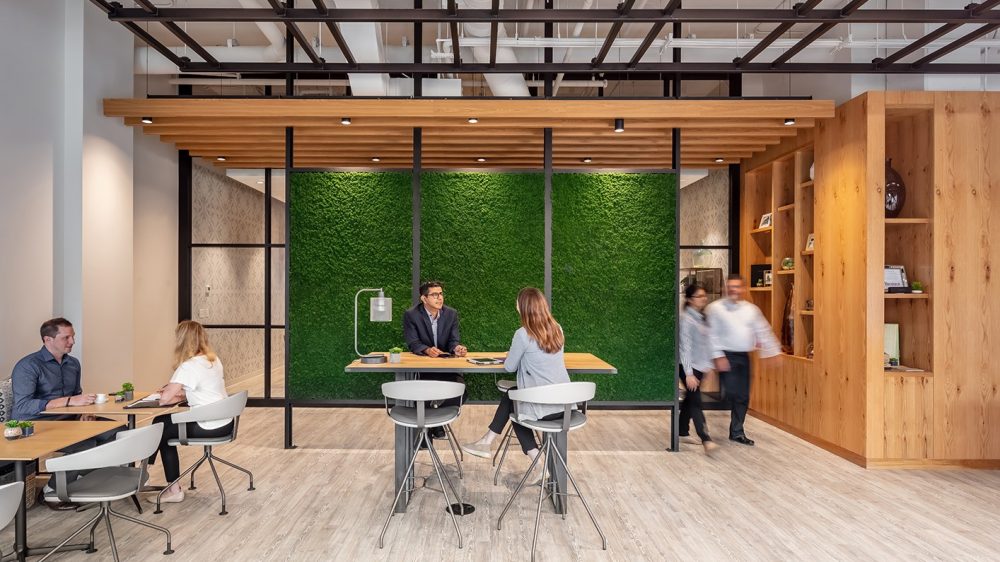How does space, brand and identity influence an employee’s connection to culture, inspire their best work and shape experience?

This article is part two in a series of three focused on workplace wellness. Make sure to check out part one here!
Purpose, the key to workplace culture, matters. So much so, that a study by LinkedIn found that 49 percent of employees would give up a portion of their salary to add a sense of purpose to their current role. Further, those that are driven by purpose are 30 percent more likely to have high performance and 50 percent will promote their company without being asked. If this is the case, why aren’t we spending more time, resources, and strategic thinking to link real purpose to the daily work of our teams? At this transitional time of employee expectations (physically, technologically, culturally, and psychologically), it is crucial that companies provide employees with a real sense of purpose associated with their work.

Expressing Purpose and Culture in the Workplace
Many companies may have a purpose or culture statement, but often only a percentage of their team has seen it, an even smaller percentage remembers it, and only a few know where to find it. Also, even if a statement exists, in many cases it is created by leadership without enough consultation or consideration of employees. If any of this sounds familiar, it is time to take a deeper look at how to bring purpose to our work in real ways.
Purpose cannot just be summed up in a few words. While a few words could provide direction, purpose needs a way to live, breathe and surround the employee in different ways to enrich their daily lives. Constant reminders are needed, along with deliberate engagement of purpose and engagement between employees, clients, and the public. In the workplace, architecture and experiential graphic design can directly connect with employees in a more intuitive and natural way.

Ensuring Inclusivity
To effectively develop an inclusive brand purpose and culture, a reciprocal interplay between company and employee, in a back and forth rather than top-down approach, is required. There also needs to be a concerted effort from the organization to create space for individuals both in the physical space and how they engage by taking the complexity of their personal backgrounds into account. It shouldn’t only be up to the employee to make sense of how they fit into the company culture – it is up to the company to find ways to connect with them on an individual level in whatever physical or virtual form the workplace may take. As a company, Google supports 16 Employee Resource Groups (ERG’s) who provide “community, personal and professional development opportunities for Googlers from underrepresented communities”. Along with supporting the ERG’s the company also ensures that the groups are consulted when major changes are being made that may impact team culture and individual experience, including changes to the workplace environment. There are many ways to gather insights to help shape the workplace so that it resonates and connects with employees. This includes surveys, workshops, and even more casual open conversations. It is important to uncover the personal values of employees, and find synergies between those values, the work they are doing, and the greater impact of the company’s products or services for clients and even the wider public. Beyond uncovering this greater sense of purpose, this process encourages the employee to bring their whole self to work in physical, emotional, intellectual, and virtual ways.
Culture
Culture is not a monolithic enterprise. It is hugely derived from our actions and the physical environment that surrounds us. An organization’s culture is influenced in three different ways. First, we find it in the espoused beliefs and values that are integral to an organization. This includes the organization’s purpose, culture, and mission statements – what the organization believes in and how it conducts business. Secondly, it is found in the basic underlying assumptions of how a team is expected to behave both internally and externally, which can be difficult to communicate as this is largely based on unwritten rules. Finally, culture is found in workplace artifacts and surroundings, the things that we can observe, touch, and interpret in the physical environment. Culture shows up in the built environment through transparency, branding, and social engagement. Transparency is demonstrated by being able to see what is going on around you and can be accomplished through lower height workstations, glazing across the fronts of offices and conference rooms, and through clear visual pathways. How a brand is communicated explains the culture through authentic materials, textures, graphics, and art. Social engagement is imperative, it is how work gets done; this is where we connect, collaborate, and build relationships and trust. Intentionally creating social engagement space, both physically and virtually, is the catalyst for fostering these types of relationships and it is when we are collaborating or sharing knowledge with each other that we have deeper, richer experiences.

Diversity & Innovation
As we assess organizational culture, we need to look both upstream and downstream to ensure we are including everyone from diverse backgrounds. This is where the richness of culture comes alive. It’s when people with diverse backgrounds and mindsets come together magic happens. When we only collaborate with people who solve problems similar to us, have similar ideas as us, or like the same things as us, we get mediocre results. It’s when we search out people with diverse, even opposing ideas or thoughts, that new ideas and questions can create engagement and innovation.
Empathy is imperative, as we are all going through these difficult times. As we have discussions with co-workers, clients, and others, it is important to take the time to really understand from another’s point of view how they are experiencing something. This is especially important while we are working dispersed.

Workplace
Purpose, culture, inclusivity, diversity, and empathy all impact an employee’s experience. The workplace is where we connect these elements together through social spaces that support inclusivity, diversity, and knowledge sharing. It is where we attract, train, mentor, and retain talent while supporting the health and well-being of employees allowing people to bring their whole self to work. The workplace is where employee’s expectations are fulfilled, where they feel valued, and have a sense of purpose. Workplaces must be thoughtfully planned and designed to consider how they affect these desired human behaviors and experiences within the space. Dynamic and transparent collaboration spaces that bring people together to work and share ideas to promote innovation are needed. The subtle layers of design from architectural considerations to interior design, artwork, and wayfinding all inject meaning and foster connection to organizational culture to enable meaningful work, both for the employee and the organization.

